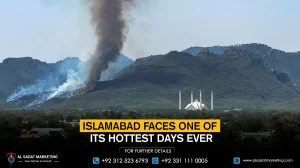The amount of carbon dioxide (CO₂) in the Earth’s air has reached 430.2 parts per million (ppm) — the highest level seen in millions of years. This new number comes from scientists at the Scripps Institution of Oceanography in California.
The reading was taken at the Mauna Loa Observatory in Hawaii, which is one of the world’s main places for measuring CO₂. Just last year, the level was 426.7 ppm, so it has gone up by 3.5 ppm in just one year.
What’s Causing It?
Experts say this rise is mainly due to people burning fossil fuels like coal, oil, and gas. These fuels release greenhouse gases, which trap heat in the Earth’s atmosphere and make the planet warmer.
“Humans haven’t seen this much CO₂ in the air for at least 3 to 5 million years,” said a scientist from Scripps. “We’re entering unknown territory.”
What Does This Mean?
Higher CO₂ levels are already making the world’s weather more extreme:
- Hotter heatwaves
- Longer dry seasons
- Heavier rains and floods
The oceans are also getting more acidic because they absorb a lot of this CO₂. This is bad for sea life like corals, shellfish, and tiny plankton, which need healthy oceans to survive.
Global Problem, Global Action Needed
Even though this reading comes from Hawaii, similar trends are seen worldwide. Scientists collect data from many places and share it through a global system that helps guide decisions on climate change.
At a recent meeting, climate experts and world leaders said urgent action is needed to cut emissions and switch to clean energy, like wind and solar.
“This is not just about the future,” one speaker said. “Climate change is already affecting lives all over the world. We have the tools to fix it — we just need to act now.”
Many areas, such as South Asia and Africa, are already facing food problems and strange weather due to climate change.
With the next big climate meeting (COP30) coming up, scientists hope this latest warning will push governments to take stronger action to protect the planet.










